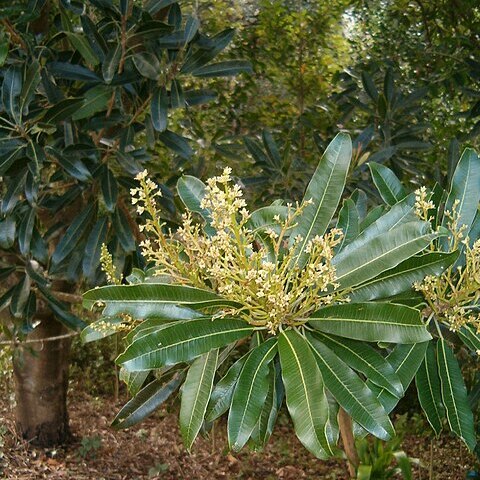Tree, 1.5-18.0 m high; evergreen, dioecious, bark dark brown, milky latex present. Leaves simple, petiolate, opposite to subopposite or spirally arranged, dark green and glossy above, paler green below, linear-oblong to narrowly-elliptic, margins entire and frilled; lateral veins fork just before reaching margins. Flowers in panicles, greenish white or yellow. Calyx 5-lobed, saucer-shaped. Petals longer than calyx, erect, oblong. Stamens 5. Ovary ovoid; styles 3. Flowering time July-Dec. Fruit a drupe, fleshy, asymmetric, becoming purple-mauve, 1-seeded.
An evergreen tree. It grows 15 m tall. It has a dense rounded crown. The bark is dark brown, rough and cracked. The leaves are simple and opposite. The leaves are dark and glossy on the upper surface with lighter veins. They are more pale underneath. The edges are wavy. The flowers are red to pink and 4 mm across. They are in sprays 15 cm long. They can be in the axils of leaves or at the ends of branches. Often male and female flowers are on separate trees. The fruit are small and kidney shaped and fleshy. They are purple when ripe.
Evergreen tree, up to 15 m high. Leaves opposite, simple, linear-oblong or narrowly elliptic, 80-150 x 24-40 mm, with conspicuous parallel secondary veins. Fruit asymmetrically oblong, fleshy, purple, indehiscent. Flowers greenish white to yellow.


